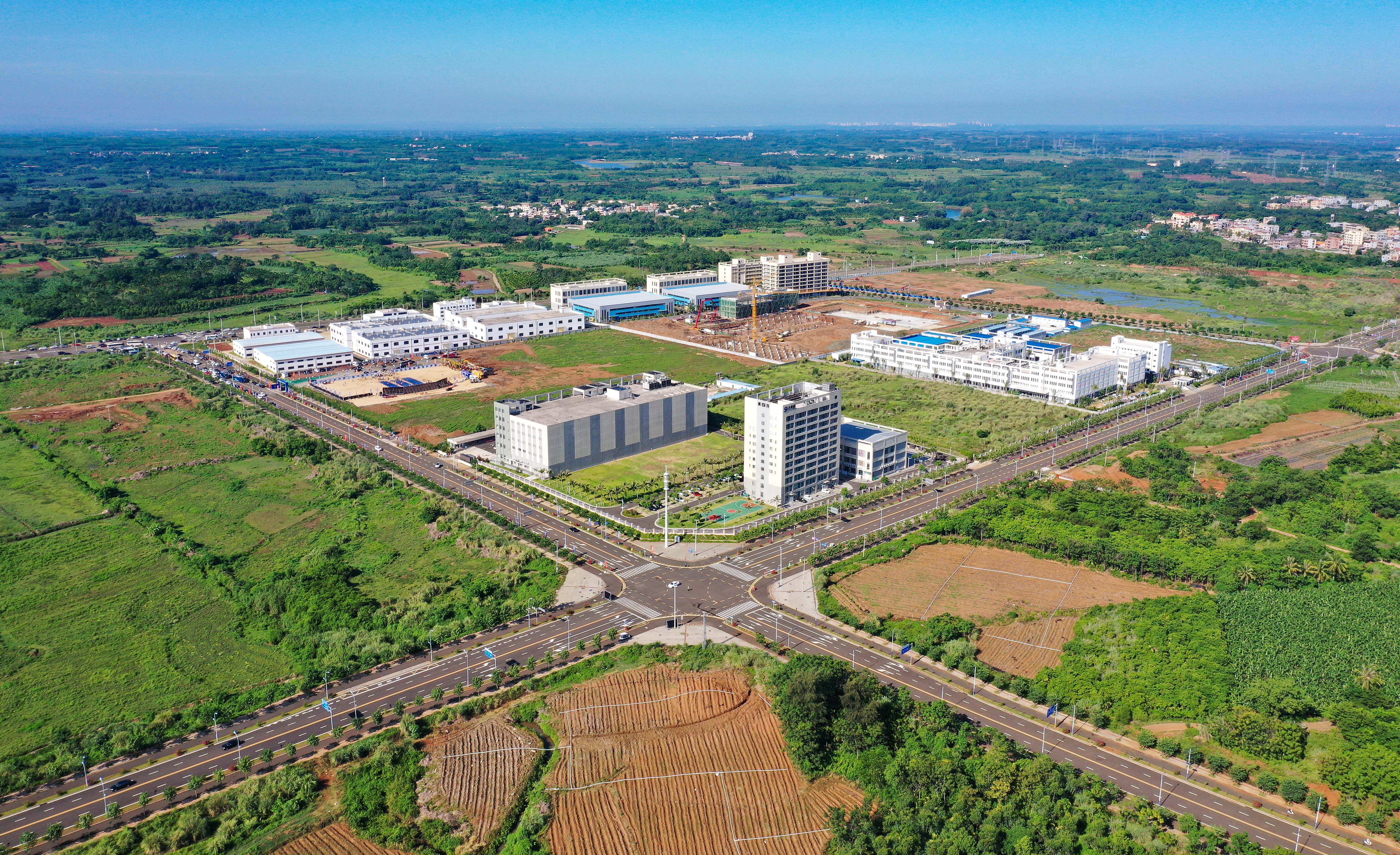
BEIJING, Aug. 13 (Xinhua) -- China's national high-tech zones, as the innovation-driven development demonstration zones and high-quality development pioneer zones in the country, have ushered in new opportunities for upgrading and development.
According to the Ministry of Science and Technology, the 169 national high-tech zones in China generated a gross domestic product (GDP) of 12.2 trillion yuan in 2019, accounting for 12.3 percent of the national total.
Since the COVID-19 outbreak this year, a large number of national high-tech zones have taken the lead in recovering from the pandemic and achieved positive growth.
China has also strengthened policy support for the development of these zones. China's top economic planner, the State Council has recently issued a guideline to speed up the high-quality development of the national high-tech zones.
-- Showing strong anti-risk ability amid epidemic
Although faced with the COVID-19 pandemic, many national high-tech zones have yielded fruitful results in the first half of this year.
From January to May, Zhongguancun National Demonstration Zone in Beijing, known as China's Silicon Valley, had seen its total revenue increase by 2.5 percent year on year to 2.2 trillion yuan.
Chengdu High-tech Industrial Development Zone in southwest China's Sichuan Province realized an industrial added value of 119.14 billion yuan in the first half of this year, up 7 percent year on year.
Kunshan National High-tech Industrial Development Zone in east China's Jiangsu Province saw newly-added market entities exceed 160,000, making the total market entities in the zone hit 411,573 which accounts for 59 percent of the total market entities in Kunshan.
On July 29, nine projects with a total investment of about 7 billion yuan started construction in Xi'an High-tech Industrial Development Zone in northwest China's Shaanxi Province.
Relying on scientific and technological innovation capabilities, the national high-tech zones have shown strong anti-risk abilities during the COVID-19 pandemic, said Xu Nanping, Vice Minister of Science and Technology.
He noted that in May this year, China's national high-tech zones realized an operating revenue of 3.27 trillion yuan, up 10.3 percent year on year, as well as an industrial output value of 2.25 trillion yuan, up 10.4 percent year on year.
-- Creating innovation community by integratingresource advantages
After more than 30 years of development, the national high-tech zone has become an important support, a new growth point as well as an innovation highland of China's economic development.
Currently, many high-tech zones have embarked on the road of complementary advantages and joint development.
On July 31, with the support of the Science & Technology Department of Sichuan Province, the management committee of Chengdu High-tech Industrial Development Zone and other units jointly initiated the Innovation and Development Strategic Alliance of Sichuan High-tech Industrial Development Zones.
On June 2, four national high-tech zones and seven municipal high-tech zones in southwest China's Chongqing Municipality jointly set up the Chongqing High-tech Industrial Development Zone Collaborative Innovation Strategic Alliance.
According to the guideline issued by the State Council, the national high-tech zones should focus on seeking innovative, industrial, integrated and green development, cultivating innovative enterprises and industries with international influence, and building an innovative community of centralized and joint development.
Over the past 30-odd years, a group of innovative companies with global influence like Huawei, Tencent, Alibaba and Baidu have sprung up in China's national high-tech zones, and multiple world-class industrial clusters covering photovoltaic, wind power and modern energy vehicles among others have been cultivated in the zones.
By the end of 2019, 81,000 high-tech firms settled in China's national high-tech zones, accounting for 35.9 percent of China's total high-tech firms.
-- Further deepening China's reform
The guideline promotes the national high-tech zones to make more optimized layout by 2025, with independent innovation capabilities enhanced, related systems and mechanisms continuously innovated, environment for innovation and entrepreneurship improved and high-tech industrial system basically taking shape.
Fostering a large number of high-tech enterprises and technology-based small and medium-sized enterprises is an important outcome during the years development of the national high-tech zones, and providing sound services and environment for these firms has also become an important responsibility of the zones, said Jia Jingdun, director of the Torch High Technology Industry Development Center with the Ministry of Science and Technology.
The efforts to further deepen the reform of the national high-tech zones have already started.
At the State Council executive meeting held on July 1 this year, arrangements were made to further promote the national high-tech zones to deepen reform, expand opening-up, and pursue high-quality development.
According to experts, apart from policy support, changing the development concept is also very important.
The national high-tech zones should transform from managing and serving the enterprises to the mechanism of sharing, co-governing and co-managing among entrepreneurs and innovators in the zones, so as to create an ecological community, said Fang Xin, former deputy Party chief of the Chinese Academy of Sciences (CAS).
Meanwhile, efforts should be made to seize the opportunities brought by digital and intelligent transformation, strengthen platform-based organization building for innovation and entrepreneurship, actively explore reform of the trading system of intellectual property rights and new types of education, and continue to play a leading role in culture and values, she added. (Edited by Gu Shanshan with Xinhua Silk Road, gushanshan.1987@163.com)




 A single purchase
A single purchase









